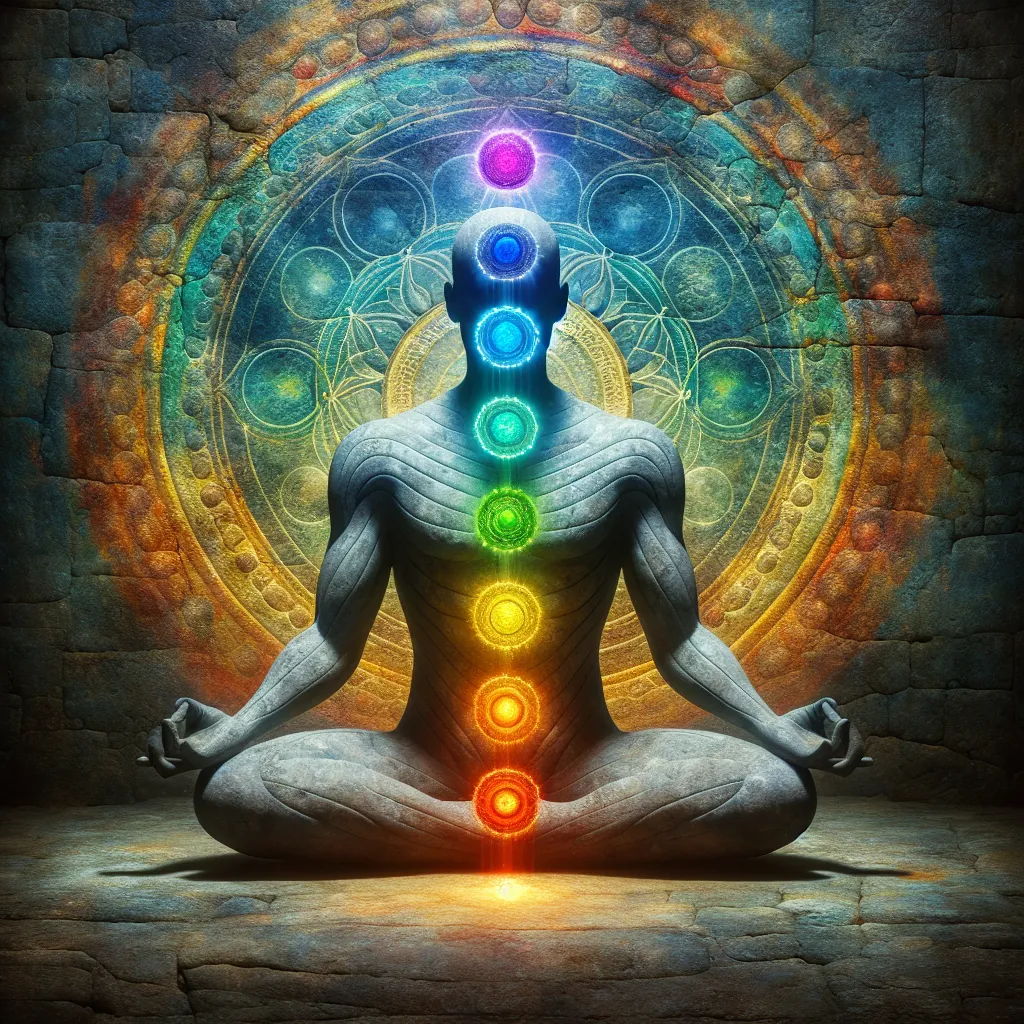
- Published on
- Authors

- Name
- You
Chakras in Taoism: Understanding the Subtle Body
Taoism, with its profound roots in ancient Chinese philosophy and spirituality, offers a rich tapestry of practices aimed at harmonizing the body, mind, and spirit. Central to Taoist internal alchemy is the concept of energy centers akin to the chakras found in Indian traditions. This article seeks to unravel the mystical wisdom and advanced science behind these critical aspects of the subtle body.
Taoist Energy Centers: The Dantian
In Taoism, the concept of energy centers is encapsulated in the term "Dantian" (丹田), which translates to "Cinnabar Field" or "Elixir Field". These are pivotal points within the body where Qi (life force energy) is cultivated and stored. There are three primary Dantian:
- Lower Dantian (Xia Dantian 下丹田)
- Location: Below the navel, in the lower abdomen.
- Function: This is the primary reservoir of Qi, responsible for physical vitality and foundational energy.
- Middle Dantian (Zhong Dantian 中丹田)
- Location: Near the heart, in the chest area.
- Function: Associated with emotional balance and the transformation of energy into spiritual strength.
- Upper Dantian (Shang Dantian 上丹田)
- Location: Forehead, between the eyebrows.
- Function: Connected to higher consciousness, intuition, and spiritual insight.
Comparison with Indian Chakras
While the Taoist Dantian concept presents a tripartite system, Indian traditions elaborate on a seven-chakra system:
| Taoist Dantian | Indian Chakra | Corresponding Energy Function |
|---|---|---|
| Lower Dantian | Root (Muladhara), Sacral (Svadhisthana), Solar Plexus (Manipura) | Physical vitality and foundational energy |
| Middle Dantian | Heart (Anahata) | Emotional balance and spiritual strength |
| Upper Dantian | Third Eye (Ajna), Crown (Sahasrara) | Higher consciousness and spiritual insight |
Qi Cultivation and Spiritual Development
In Taoist practice, cultivating Qi through the Dantian centers is fundamental for achieving spiritual development and physical health. Here’s how each Dantian plays a role:
Lower Dantian: The Foundation
- Practice: Deep abdominal breathing, Tai Chi, and Qigong exercises.
- Objective: To strengthen and store vital energy, laying the groundwork for all higher practices.
Middle Dantian: Emotional Transformation
- Practice: Heart-centered meditations, balancing techniques, and compassionate activities.
- Objective: To harmonize emotions and convert them into refined energy forms for spiritual ascent.
Upper Dantian: Enlightenment and Wisdom
- Practice: Meditation focusing on the "third eye", visualization, and stillness practices.
- Objective: To enhance intuition, open channels for spiritual insight, and achieve enlightenment.
Integration of Mystical Wisdom and Advanced Science
Recent scientific enquiries into biofield physiology and neuroscience offer a fascinating parallel to ancient Taoist practices. Studies suggest that the body's electromagnetic fields and neurological activities align with the descriptions of Qi flow and energy centers found in spiritual traditions.
Example: HeartMath Institute’s Research
- Findings: The heart generates the strongest electromagnetic field in the body, which changes according to emotional states.
- Correlation: This aligns with the Taoist understanding of the Middle Dantian's role in emotional balance and energy transformation.
Example: Neural Correlates with Upper Dantian Practices
- Findings: Meditation practices focusing on areas like the forehead can enhance neural plasticity and cognitive function.
- Correlation: This reflects the Taoist emphasis on the Upper Dantian for higher consciousness and spiritual enlightenment.
Conclusion
The Taoist perspective on energy centers, while distinct in structure, resonates deeply with global spiritual systems and is increasingly supported by contemporary scientific research. By understanding and integrating these concepts into practice, individuals can achieve a harmonious balance of physical vitality, emotional health, and spiritual insight.
Happy exploring the mystical and scientific realms of the Taoist subtle body!
References
- "The Tao of Meditation: Ways to Inner Peace" by Jou Tsung Hwa.
- HeartMath Institute. (2021). Research Publications.
- Neural Mechanisms of Meditation: Where Is the Current State of Research?. Frontiers in Psychology.
